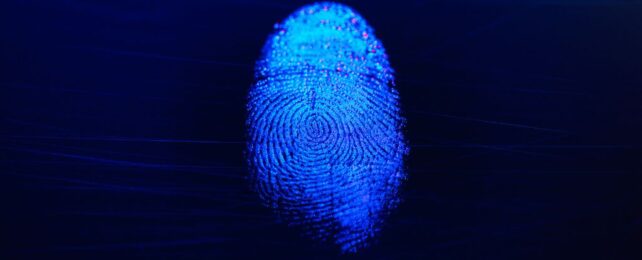Nobody on Earth has fingerprints quite like yours. Even if you happen to have an identical twin, the swirling arrangement of ridges on your hands and feet will be exclusive to you.
Scientists have had their suspicions on what factors might decide your unique pattern of prints but have struggled to pin down the exact mechanisms.
Using a variety of procedures on mice, human tissues, cell cultures, and genes, an international team of researchers has honed in on the process that literally gives rise to our skin's signature corrugations.
The minuscule bumps and furrows of skin found on the pads of human fingertips start to form around week 13 of a fetus' life. The pattern that ultimately emerges from these colliding lines sticks with a person for the rest of their days, persisting through just about any kind of wear and tear.
Monozygotic twins are formed from the same egg and sperm, and yet by the time they are born, each twin has experienced their own set of genetic mutations in the womb, which makes them not quite 100 percent identical.
The chances of their fingerprints matching at birth is about 1 in 64 billion – an extremely low chance that's never been observed before.
Part of the reason that twins have different fingerprints could have something to do with their slightly different genomes. But there are also a bunch of other subtle factors at play, like the molecular pathways that share information and instructions between genes.
These are known as signaling pathways and they are highly sensitive to minute local factors within the womb, which means they play out differently for everyone, even twins.
The current study, which was led by researchers at the University of Edinburgh, has now identified three different chains of signaling in particular that seem to shape the grip on our fingers: Wnt, bone morphogenetic protein (BMP), and ectodysplasin A receptors (EDAR) pathways. All three were identified by watching the development of human cells in the lab. Their role was then tested further in mouse models.
Mice don't have fingerprints quite like us, but they do have transverse ridges of skin on their digits that develop similarly, albeit with less complexity.
In both humans and mice, Wnt pathways seemed to stimulate the growth of ridges in the outer layer of a digit's skin, whereas BMP suppressed the formation of these grooves. EDAR signals, meanwhile, helped shape the size and spacing of skin ridges that formed.
When EDAR activity was silenced in mouse models, for instance, their digits didn't show transverse ridges but a polka dot-like pattern.
The push-and-pull in ridge formation reflects patterns that emerge from what's known as a Turing reaction-diffusion system, and it seems to be a big reason why our fingerprints all end up looking so different.
A Turing pattern is a mathematical concept developed by Alan Turing in 1952 to explain how stripes and spots in nature show random, minute differences in their structure.
When two 'diffusable' substances collide, Turing's model shows the result is not always the same. There is a lot of noise and variability in how the collision ultimately shakes out, resulting in a chaos that is hard to predict.
Like the stripes of a zebra, scientists think this complexity is part of what leads to such a "richly detailed fine structure" in each of our fingerprints.
In humans, these ridges tend to form at the tip, bottom, and center of our fingerpads, before spreading outwards.
Logically, if more ridges are formed in a tight period of time, then they should sit closer together. If a bunch of lines then meet up with ridges from another part of the pad, they can form whorls, arches, and loops around one another.
It's sort of like what happens when multiple cross-currents in the ocean collide, forcing waves into intricate patterns. The timing, location, and angle of these ridges is highly sensitive to the local environment of the womb.
"The confluence of patterning waves initiated at these variable sites determines the fingerprint pattern type, which together with the inherent randomness of Turing systems delivers an individual uniqueness to each fingerprint," the authors write.
Subtle anatomical differences likely also play a role. Flexion creases, for instance, seem to form boundaries that ridges must flow around, almost like a rock in a river.
Later in fetal development, when mice and humans form sweat glands on their fingertips, our prints are differentiated even more.
The researchers say all of these factors ultimately play into an intricate and dynamic system of development – one that leads to the "unending variation of human fingerprint patterns" we see today.
The study was published in Cell.
